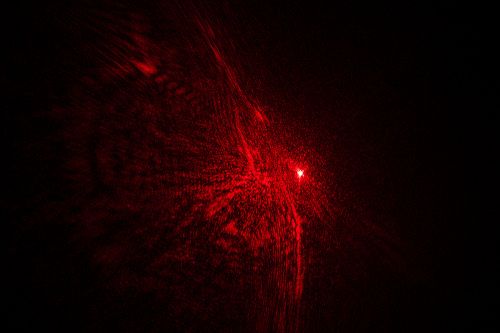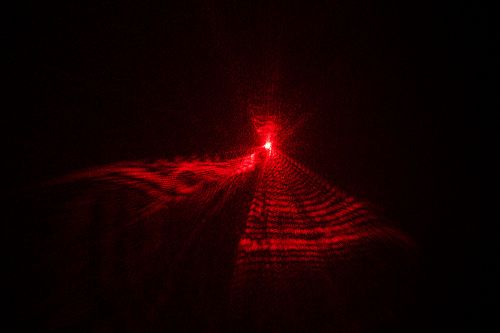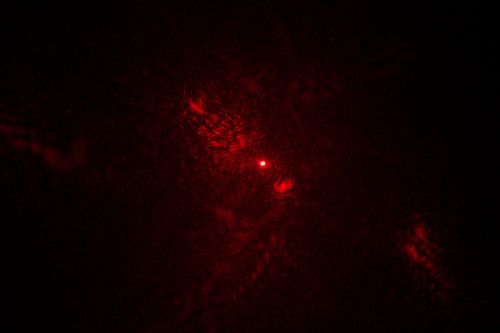Lunch Box Laser Shows
Lasers! Scary to some, wildly entertaining to others. We've mentioned lasers before, but rather than being used for advancements in science, today's post is strictly about laser entertainment. LASERTAINMENT.
Back in late 2009, there was a particular Make: Magazine article that caught my interest. It was titled "Lunchbox Laser Shows". The article went over how to make amazing looking laser shows with very simple materials. The most fascinating part of the article (to me) was showing how to diffract lasers using hot glue to get an awesome "northern lights" effect. After I read the article, I immediately set out to create my own lunchbox laser show. I bought a Pigs in Space lunchbox off of eBay, some laser diffraction gratings from Dragon Lasers, and some lasers from SparkFun. The originals in the article had no AI behind them; they relied purely on mechanical changes to create the effects. I wanted a little more control over my laser show, so I added an Arduino and an Ardumoto Shield. This allowed me to vary the speed of my motors, add other moving parts - such as mirrors on servo motors - and gave me the option to expand the project by making it sound reactive.
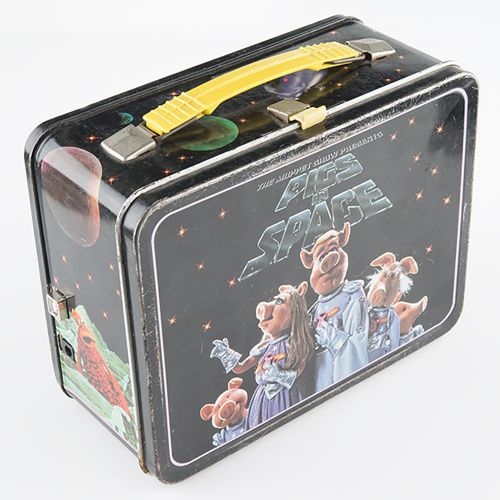
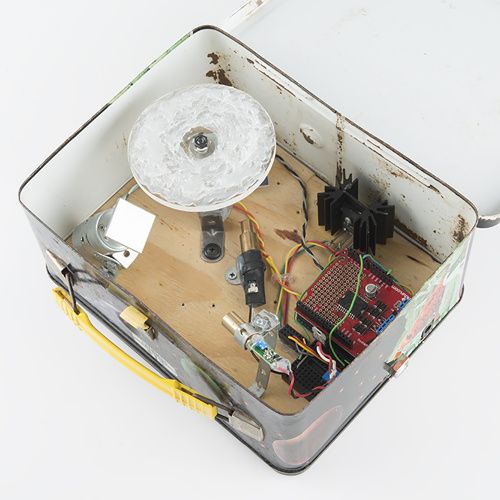
Here is a video of the original in action.
While my lunchbox has made numerous appearances at parties over the years, it had been some time since it had gotten any use or had any modifications. That is until recently, when I was tasked with writing a hookup guide for the Mini FET Shield. As I was thinking of high-current devices to drive with the shield, memories of the lunchbox laser show flashed in my mind. Shortly after, I realized that our new offering of Actobotics parts surely contained some pieces that could be useful in assembling a new generation of lunchbox laser shows. I was also intent on finding new materials through which to shine lasers and see what the effect would be.
Diffraction Testing
The most convenient Actobotics part I happened across were the clear acrylic wheels that mount to the various motors. In past versions, I had to use various clear discs, such as those found at the bottom of a stack of CDs, or just made my own out of scrap acrylic, and I always had to come up with a clever way of mounting them to the motors. However, the clear wheels worked perfect for applying hot glue and other materials to test how well they performed diffraction, and they mounted to the motors very easily using a set screw hub. Once I had enough hardware to hold the laser and the disc in place, I began experimenting with different materials. Each disc was divided into four sections with a different material applied to each.
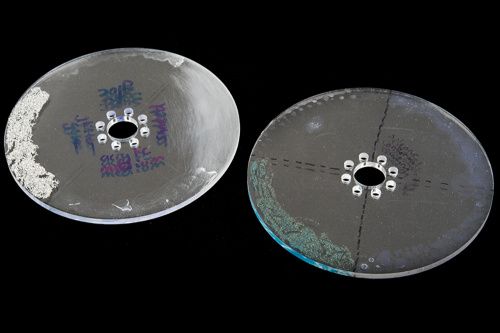
Some of the materials tested were super glue, acrylic paint blending medium, glitter glue, nail polish of different opacities, and sanding the acrylic. Some didn't work as well as hoped. Super glue and acrylic paint medium were similar to the hot glue.
